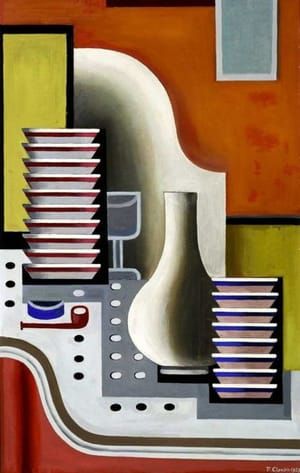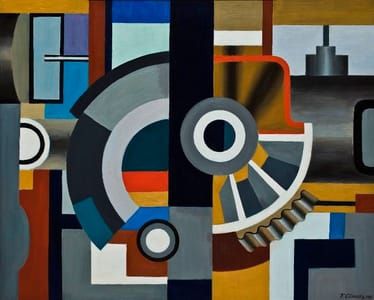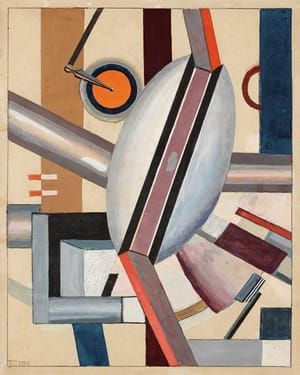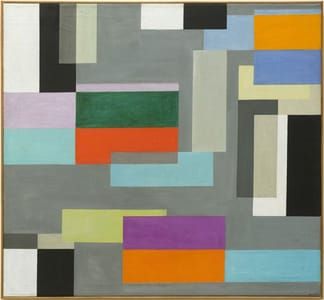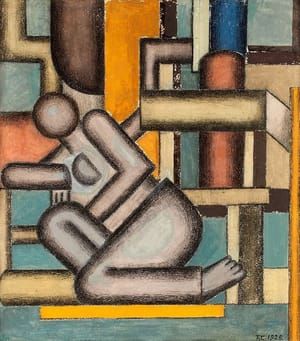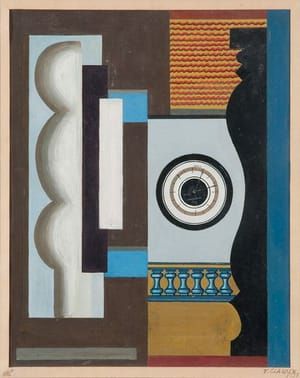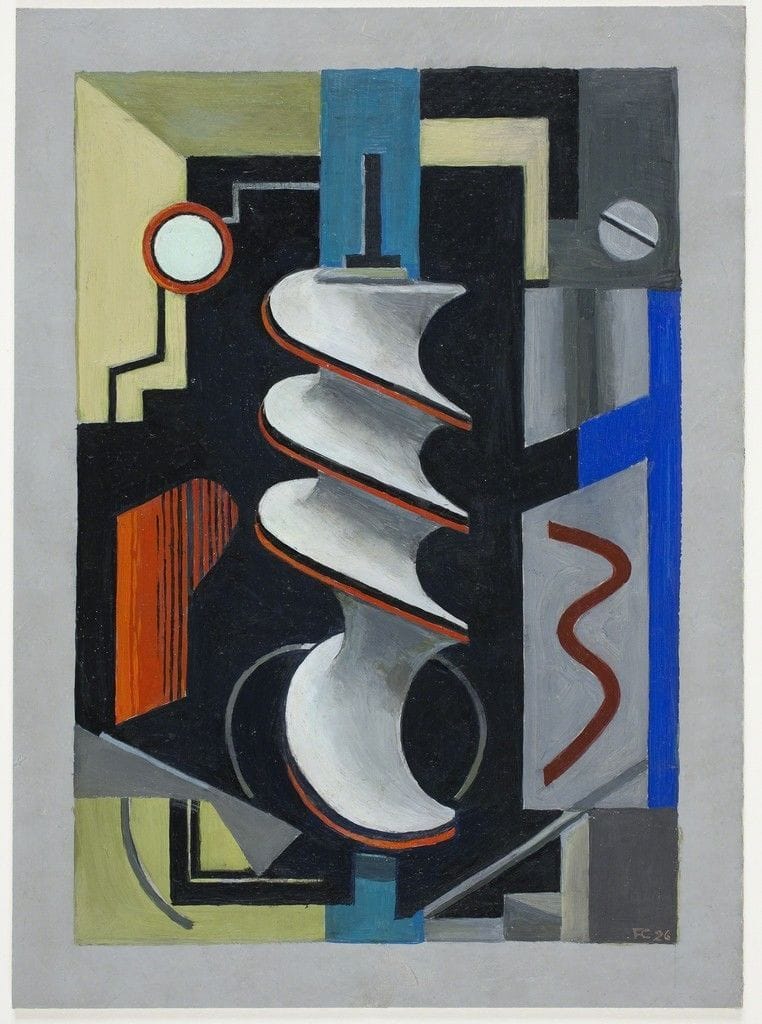

The Screw
Franciska Clausen
The central motif is a large screw, its shape reproduced by means of a stringent, geometric idiom. The three-dimensional screw contrasts with the composition’s otherwise flat order, and at the same time its mechanical quality ties in seamlessly with the non-figurative context.
The Geometry of the Image
The serpentine movement whirls a force through the tip of the screw, a force that carries further outward and condenses itself once again at its top. Similarly, the geometry of the image creates a cycle reminiscent of the repeated movement of a machine.
The Constructive Art
In the 1920s, Franciska Clausen first lived in Berlin and later in Paris, where she studied under and worked with several of the pioneers of Constructive art, including artists such as László Moholy-Nagy (1895-1946) and Fernand Léger (1881-1955). Her studies at Léger’s art school, Académie Moderne, had a particular impact on her.
The Influence of Legér
Legér preferred using the simplified objects of the modern industrial society in his arrangements, and he believed that art could form the basis for new correlations within society. In Franciska Clausen’s work, the ideas are apparent in a group of arrangements with machine parts in which the images have been reduced to basic geometric shapes.
She was the only artist among the early Danish Modernists to enter the inner circle of the international avant-garde, influencing others as they influenced her.
(http://www.smk.dk/en/explore-the-art/highlights/franciska-clausen-the-screw/)
Uploaded on Sep 26, 2017 by Suzan Hamer
Franciska Clausen
artistArthur
coming soon

